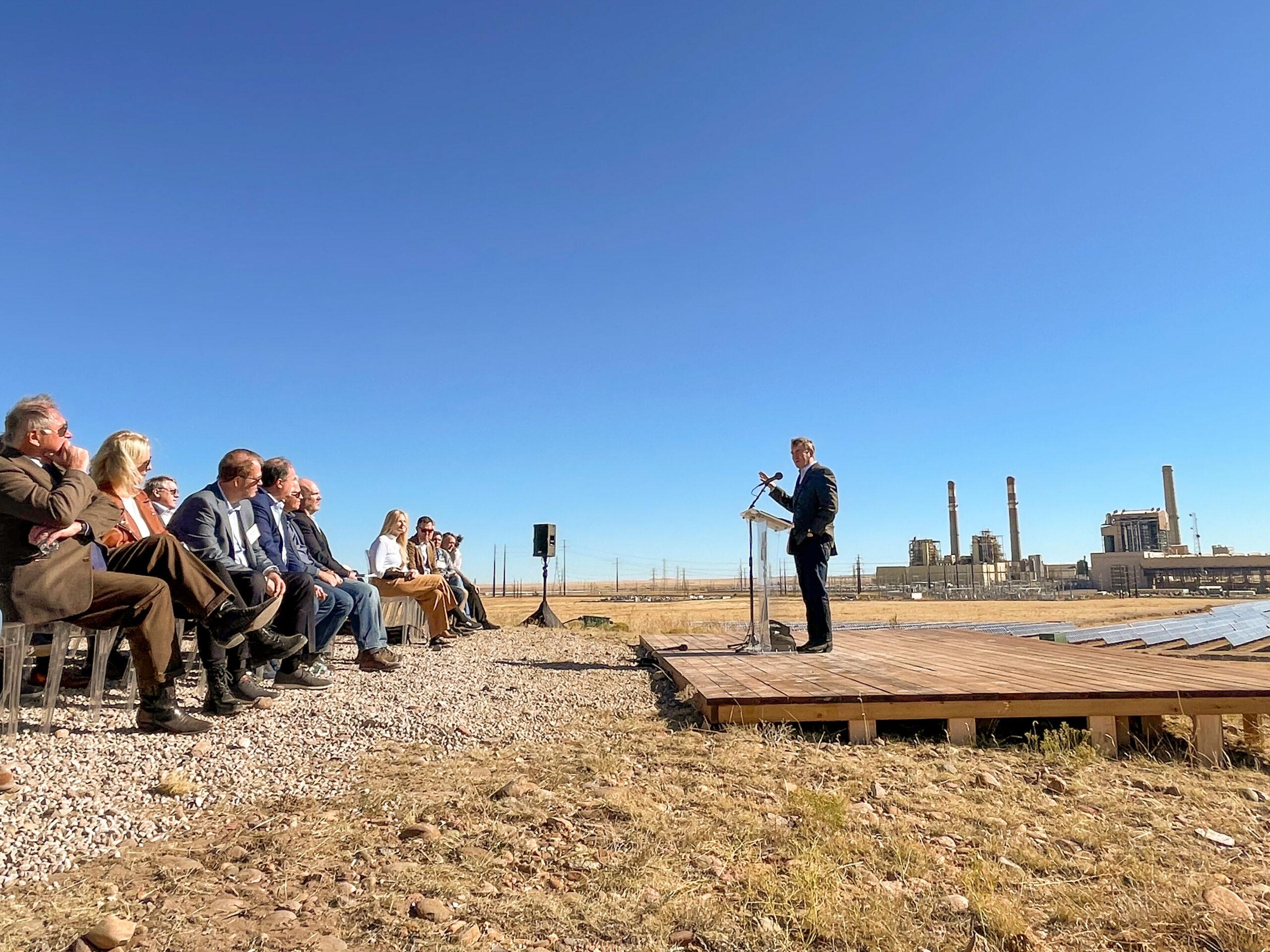
The official launch of a massive solar array that will power the steel mill in Pueblo was held Wednesday on top of a hill with a view that framed the array, mill and power station connecting the two.
The Bighorn solar project, financed, built and operated by Lightsource BP, will generate electricity to power more than 90 percent of the EVRAZ Rocky Mountain steel mill, officials said.
Up to 240 megawatts of power from the solar panels will be routed to the Comanche Generating Station, a coal-fired power plant run by Xcel Energy, on its way to the nearby steel mill. The project will be fully operational next month.
Bighorn is the largest on-site solar project for a single customer in the country, according to the Colorado Energy Office.
Industry executives, solar energy representatives and elected officials, including Democratic U.S. Sen. Michael Bennet, attended the launch. Bennet said the solar project is an example of the future of the country’s transition to renewable energy.
“We’ll be able to walk confidently into a world where we are dealing with the catastrophe of climate change, at the same time we’re rebuilding our economy,” Bennet said.
The array is made up of 750,000 solar panels installed on 1,800 acres of flat land in the open desert south of Pueblo. A wind tower manufacturing plant recently bought by South Korea-based company CS Wind is located south of the array.
Bighorn’s construction comes at a pivotal time in Pueblo, where officials and residents are debating the future of the energy industry in the city.
Xcel plans to shut down Comanche’s coal operations by 2040, three decades earlier than planned. Environmental groups are pushing for an even earlier deadline while city and county officials are divided about whether the community should invest more in renewable energy or other alternatives, including nuclear.
Lightsource BP will supply electricity from the solar array to Xcel, the state’s largest utility, for at least 20 years under a purchasing agreement, officials said. The panels are expected to last at least 35 years.
EVRAZ workers will use the electricity to manufacture rail tracks that are longer and easier to install.
“I’m pretty sure that mill would not be being built without” the solar array, said David Ferryman, senior vice president of the Pueblo business unit for EVRAZ.








